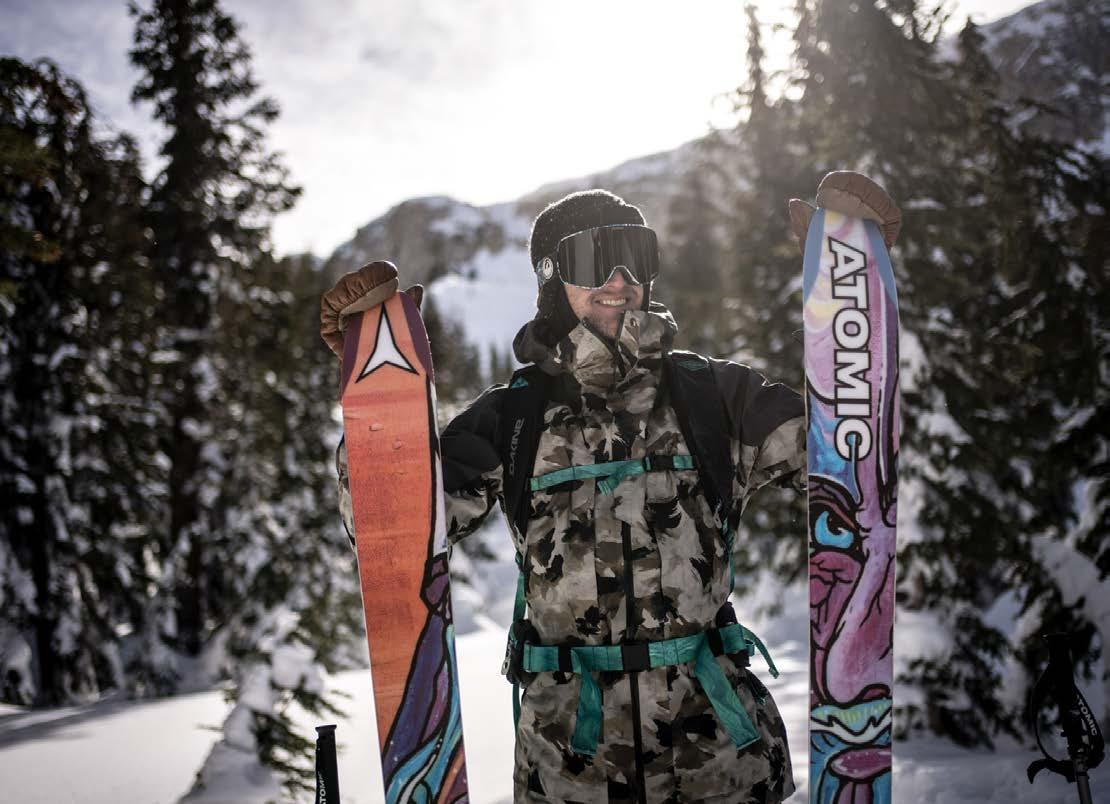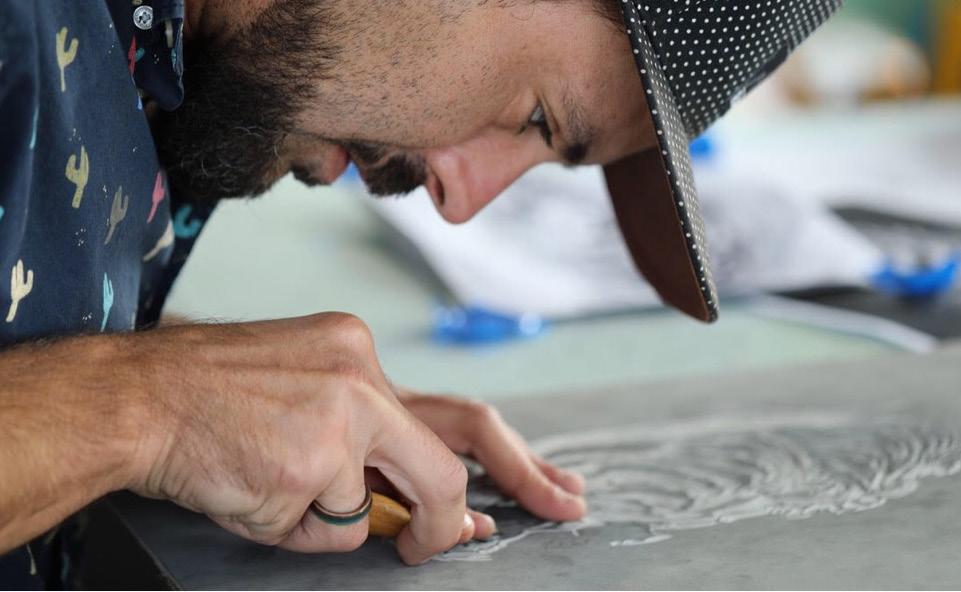
2 minute read
Taking Art to Powder
| BY CASEY HOPKINS
When someone mentions the art of skiing, people may think of a perfectly executed tele turn, elegantly carved edgework on a groomer, efficient but powerful form. And while all of these are real chef’s-kiss material to the seasoned skier, we’re speaking of art in the more literal sense. What is involved in designing the intricate images that adorn skis and who are the creatives who design them?
In 2006, soon-to-be founder of Icelantic Skis, Ben Anderson, got together with his co-founder, artist Travis Parr. “Ben and our other good buddy, Travis Cook, came down to my college graduation and convinced me to move back to Colorado and start this ski company with them,” Parr says. After establishing a line of five separate skis, the new company took its products to a skiing trade show in Germany, where they won an international award for ‘Winter Hardgood of the Year.’ Since then, Icelantic has been producing skis for powder junkies around the world.
Not long after Icelantic got its start, one of the world’s top freestyle skiers, Chris Benchetler, signed a deal with Atomic Skis, which, at the time, didn’t have a prominent creative vision in the freeride and big mountain scene, as the company focused primarily on ski racing. “They actually came to me,” Benchetler says. “Now looking back, it was one of the greatest decisions I’ve made in my career. I threw out the idea of having the opportunity to have creative control of my own ski and be able to influence not only the artwork, but the actual shape and design element.”
Since then, both Parr and Benchetler have been sending their creative visions to the slopes.
For the 2022-23 Icelantic line, Parr’s art ranges from geometrical designs and greenspaces to topographic landscapes and scorching phoenixes. “I’m just letting all the flavors of life dictate that journey,” Parr says. “You take it off the wall and you put it into the culture, and that’s where I find my artwork actually living a better life.”
For Benchetler, much of his work is inspired by mountain scenery. “I take all the lessons I’ve learned in life and in the mountains, staring at some of the most beautiful places in the world, and I’m just constantly downloading that and translating it onto a canvas,” Benchetler says. “There’s a certain beauty and awe in what mother nature looks like and provides us. I think that resonates with people globally.”
“The beginning years were fun,” Parr says. “It was just super raw. I used to stretch the canvases exactly the same size as the skis and paint them to go directly onto the skis.” But after a few years, his technique began to change and he began making smaller, separate but similar pieces that would go on separate lines of skis, following an overall theme.
“Doing it for 20 years, I’ve built up my library of images and textures and placements. I can pick a piece from [the library] and use that, then pick another piece from something else and use that and create an original piece of artwork to encompass all that, then just mix them all together to create the ‘Icelantic
Stew,’ so to speak,” Parr says.
As far as taking the piece of art from a canvas to a ski, Benchetler says it’s a pretty straightforward process.

Photographer Christian Pondella shoots photos of the artwork, which are then transferred to Adobe Illustrator or Photoshop. They’re laid out by designers at Atomic with room for branding, with care taken to ensure the ski looks as beautiful as possible.
The famous filmmaker and original ski bum Warren Miller once said, “A pair of skis is the ultimate transformation to freedom.” While skis are constantly being re-shaped and re-defined, one thing is for certain: the work these two artists have created for the past decade and a half has transformed ski artwork and aged it for a new era, full of beautiful, colorful and not-yet-imagined possibilities. SM









